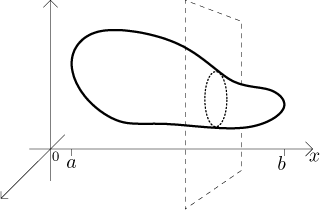
Consider a solid in the three-dimensional space. For every x, let A(x) be the area of the region obtained by intersecting the given solid with the plane perpendicular to the x-axis and intersecting it at the point x. Assume that A is not zero only for values of x between a and b.

The volume of the solid is then equal to
![]()
Example: Consider the cone whose basis is a right-angle triangle with sides adjacent to the right angle equal to 3 and 4, and whose height is 6.
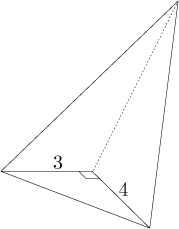
Find its volume.
Solution: Obviously, since we have so much information about the base, we will be slicing the cone parallel to the base and try to determine the areas of slices. To set up the situation properly, we position the cone in the space so that the vertex is at the origin and the base is perpendicular to the x-axis. Note that very often we place solids so that the origin lies in the base, but in this example we will be using similarity and the placement we adopted will make for easier formulas.
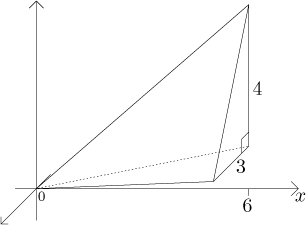
Now if we slice the solid with a plane perpendicular to the x-axis, the slice will be parallel to the base, also intersections of this plane with the sides of the cone will be parallel to the sides of the base. Thus we can use similarity of triangles.
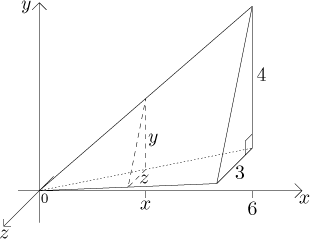
From the picture we easily conclude that
![]()
For the area of the slice we then have (thanks to the right angle at the right place)
![]()
Thus
![]()
Note that the answer did not depend on the exact position of the vertex over the base, the only relevant information was the height. Thus all the following cones have the same volume.
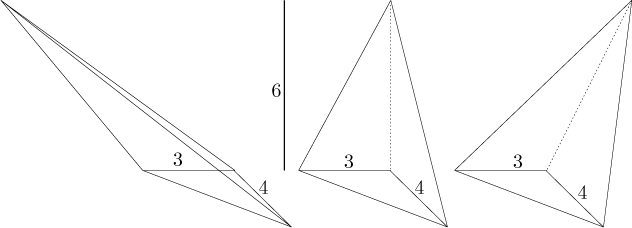
In a similar way one can prove the following:
Fact
Let R be a plane region with area A. The cone with base
R and height h has volume